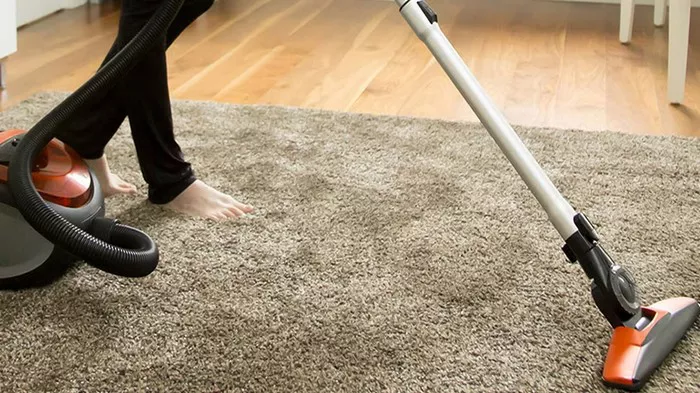Keeping your home clean involves many tasks, and vacuuming is one of the most common. But what happens when you encounter a wet carpet? Can you vacuum it? This question arises for many homeowners, especially when dealing with spills, floods, or cleaning. In this article, we’ll explore whether you can vacuum a wet carpet, how to do it properly, and what tools you might need.
Understanding Wet Carpet Issues
Why Carpet Gets Wet
Carpets can get wet for various reasons. Spills, leaks, pet accidents, and cleaning are common causes. Water damage from floods or plumbing issues is another major cause. Understanding why your carpet is wet can help you determine the best approach to deal with it.
Dangers of Wet Carpet
Wet carpets are not just an inconvenience. They can lead to several issues:
Mold and Mildew: These can develop quickly in damp environments, posing health risks.
Odors: Wet carpets can develop unpleasant smells.
Structural Damage: Prolonged moisture can damage the flooring beneath the carpet.
Pests: Damp carpets can attract pests like insects.
Immediate Actions for Wet Carpet
When you discover a wet carpet, immediate action is crucial:
Identify the Source: Find and stop the source of the water.
Remove Excess Water: Use towels or a wet vacuum to soak up as much water as possible.
Ventilation: Increase airflow in the room with fans and open windows.
Professional Help: For significant water damage, consider calling professionals.
See Also: Can You Use a Vacuum on Hardwood Floors?
Can You Vacuum Wet Carpet?
Standard Vacuum Cleaners
Standard vacuum cleaners are not designed to handle wet carpets. They can suffer damage if used on wet surfaces because they are not built to handle moisture. Using a standard vacuum can lead to:
Electrical Hazards: Moisture can cause electrical shorts, posing a fire risk.
Motor Damage: Water can damage the motor and internal components.
Poor Performance: Standard vacuums are not effective at removing water.
Wet/Dry Vacuums
Wet/dry vacuums, also known as shop vacs, are designed to handle both wet and dry debris. They are suitable for vacuuming wet carpets. Here’s how they work:
Design: They have a robust design that can withstand moisture.
Functionality: These vacuums can suction up water effectively.
Safety: Wet/dry vacuums are built to handle moisture safely, reducing the risk of electrical hazards.
Using a Wet/Dry Vacuum
When using a wet/dry vacuum on a wet carpet, follow these steps:
Preparation: Ensure the vacuum is set to the wet mode. Remove any filters not designed for wet use.
Suction: Slowly run the vacuum over the wet area, allowing it to suction up the water.
Empty the Tank: Regularly empty the tank to maintain efficiency.
Dry the Carpet: After vacuuming, continue drying the carpet using fans and dehumidifiers.
Steps to Clean and Dry Wet Carpet
Initial Water Removal
The first step in cleaning a wet carpet is to remove as much water as possible. This can be done using towels, mops, and a wet/dry vacuum.
Cleaning the Carpet
After removing the water, clean the carpet to prevent mold and mildew:
Mild Detergent: Use a mild detergent suitable for carpets.
Scrubbing: Gently scrub the carpet with a brush.
Rinse: Rinse the carpet with clean water to remove soap residue.
Suction: Use the wet/dry vacuum to remove the rinse water.
Drying the Carpet
Drying is a crucial step to prevent mold growth:
Fans: Place fans around the room to increase airflow.
Dehumidifiers: Use dehumidifiers to reduce moisture in the air.
Ventilation: Open windows and doors to enhance ventilation.
Professional Dryers: Consider renting professional carpet dryers for faster results.
Monitoring and Maintenance
Regularly check the carpet and underlay for signs of moisture. Maintain good ventilation and use dehumidifiers if needed. Clean any spills promptly to prevent future issues.
Preventing Future Wet Carpet Issues
Regular Maintenance
Regular maintenance can help prevent wet carpet issues:
Check for Leaks: Regularly inspect plumbing and appliances for leaks.
Use Rugs and Mats: Place rugs and mats in high-traffic areas to protect the carpet.
Clean Spills Promptly: Address spills immediately to prevent soaking.
Professional Cleaning: Schedule regular professional carpet cleaning.
Dealing with Floods and Large Spills
For significant water issues like floods:
Professional Help: Consider professional water damage restoration services.
Emergency Plan: Have an emergency plan for dealing with floods.
Insurance: Ensure your home insurance covers water damage.
Choosing the Right Carpet
Choose carpets with water-resistant properties for areas prone to moisture:
Materials: Opt for synthetic materials that repel water.
Backing: Select carpets with moisture-resistant backing.
Installation: Ensure proper installation to prevent water seepage.
Conclusion
Vacuuming a wet carpet is possible with the right tools and techniques. Standard vacuums are not suitable for this task, but wet/dry vacuums are designed to handle moisture. Immediate action is crucial to prevent damage and health risks. Proper cleaning and drying techniques can restore your carpet and prevent future issues. Regular maintenance and preventative measures can keep your carpets dry and in good condition. Remember, when in doubt, seek professional help to ensure the best results.

